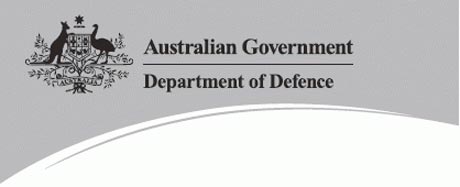APS Level 4/5-6 (S&T 3-4)
$69,811- $95,873 (plus super)
Fishermans Bend – VIC
In its 2017 Naval Shipbuilding Plan, the Australian Government made clear that a skilled workforce is critical to the success of the National Naval Shipbuilding Enterprise. As the largest capital investment ever undertaken in Australia, the National Naval Shipbuilding Enterprise represents an entirely new direction in the way Australia underpins its national security interests. We are seeking applications from individuals interested in undertaking challenging, interesting and important work that is front and centre for the Australian Government within the Naval Shipbuilding Enterprise.
Maritime Division uses science and technology to deliver a capability edge to the Australian Defence Force in the maritime domain. We have expertise in a diverse range of technologies including sensors, statistics, materials, propulsion, automation, systems integration, signatures, and ship building. These are combined in a multidisciplinary research program to improve the operational capability, availability, reliability and safety of existing maritime and air platforms, and to reduce their vulnerabilities. We are at the forefront of future systems, including autonomous vehicles, and the Defence Force’s future submarine and surface ship programs. Maritime Division has an emphasis on delivering impact to the Australian Defence Force.
Our ideal candidates will have a passion for and demonstrated ability to solve highly complex problems and demonstrating solutions through prototyping using a high degree of rigor (using proven engineering and or scientific methods). You will be able to apply your knowledge to solve complex real world problems, and work with a diverse range of stakeholders to understand their needs and adjust and communicate their approach accordingly to meet any imposed timelines/milestones, working effectively in a team environment. You will demonstrate good communication skills and be willing to work as part of a team to achieve the required defence outcomes in the information sciences domain.
We have multiple positions available in the following disciplines:
- Non-Acoustic Signature Management (NASM)
The Non-Acoustic Signature Management group provides research and engineering support to the Maritime Domain, in particular the group supports the following areas:
- Electromagnetic Signature Control provides a sovereign capability to enhance the operational effectiveness and survivability of current and future platforms through the control of Radar, Infrared and Visible signatures using specialised treatments, computer modelling and measurement techniques.
- Specialised Coatings and Corrosion Science area enhances the operational effectiveness, safety and availability, and reduces the cost of ownership, of ADF platforms through application of corrosion prevention technologies to minimise platform signatures and structural degradation.
- Undersea Command and Control (UCC)
The Undersea Command and Control Branch is seeking multiple S&T 3-4 (Above) Researchers to undertake research in the undersea warfare domain. This includes research activities associated with torpedoes, torpedo defence, submarine combat control systems, submarine sonar systems, optronics, and human sciences for enhancing crewing systems and control room design/innovation.
- Acoustic Signature Management (ASM)
The Acoustic Signature Management branch of Maritime Division provides Australia’s primary capability for the management and control of acoustic signatures, hydrodynamics, and manoeuvring performance of defence maritime platforms. The branch consist of the Acoustic Signature Control, Hydroacoustics, and Acoustic Materials Systems groups. The work involves analytical and numerical prediction capability and has access to a number of world class experimental facilities.
- Maritime Platform Performance (MPP)
The Maritime Platform Performance Group provides research and engineering support to the Maritime Domain, in particular the group supports the following areas:
- The Power and Energy Systems Group provides research and engineering support to the Maritime Domain, in particular the group supports the following areas:
- Mechanical Systems – research, modelling and engineering support for diesel performance and reliability, energy reduction and waste energy recovery technologies
- Electrical Systems – development and exploitation of electrical power and energy system models (main propulsion motors, power electronics and hardware power in the loop) and Pb-acid battery performance, integration and optimisation
- Electro-Chemical – materials development, performance modelling and prognosis and safety assessment of alternative battery chemistries
- Naval Platform Survivability (NPS) leads the research and development of advanced modelling and technologies to support ADF surface ships and submarines in the areas of material analysis and design; fire-fighting and atmosphere; platform vulnerability and recoverability to underwater and air water weapon effects.
- Naval Architecture and Platform System Analysis (NAPSA) guides research and development of advanced tools and methods to assess the whole-of-vessel performance for the Australian Defence Force. Whole-of-vessel performance includes: seakeeping; multi-vessel interactions; operational loads; whole-of-vessel performance; structural response; integrated model based systems exploration and design trade-off studies.
- Littoral Autonomy Sensors and Systems
The Littoral Autonomy Sensors and Systems (LASS) Major Science Technology Capability (MSTC) has a major focus on the development of robotic and autonomous systems (RAS) to support future Navy capabilities, including in littoral and undersea warfare. The MSTC is comprised of three Science and Technology Capabilities (STC) centred around:
- Robotics, vehicle architectures and autonomy, underwater communications, integration and performance;
- Sensing and perception, including underwater object detection and classification; and
- Mine countermeasure systems.
As a member of the MSTC you will collaborate with a team of motivated engineers, scientists and mathematicians whose mission is to increase capability through improved employment of robotic and autonomous systems, and / or the exploitation of sensor data for undersea perception and cueing of autonomous systems.
Application Closing Date: 30 May 2022
For further information please review the job information pack, reference the following links:
DSTG/02466/22 (NASM)
https://defencecareers.nga.net.au/?jati=8259F4E9-54F1-5733-D149-C88D853B5DE3
DSTG/2439/22 (UCC)
https://defencecareers.nga.net.au/?jati=63E3DB0A-024E-8A01-3986-C88D84A16E95
DSTG/02431/22 (ASM)
https://defencecareers.nga.net.au/?jati=66A738A7-D3D8-254F-2E41-C88D84141129
DSTG/02455/22 (MPP)
https://defencecareers.nga.net.au/?jati=C89293FC-633E-F7D1-1FFD-C88D84CB0265
DSTG/02397/22 (LSS)
https://defencecareers.nga.net.au/?jati=C09992B9-BB74-845A-5CA2-C88D8554766F







 Print
Print